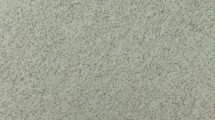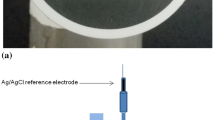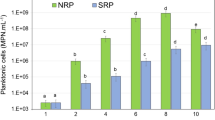Abstract
A new research proposal was introduced aiming at solving the fundamental theory for reducing the risk of hydrogen embrittlement (HE) in high-strength steels by utilizing hydrogen-consuming microorganisms. The superior performance of high-strength steel can meet the material strength requirements for remote deep-sea marine engineering development. Due to the heavy corrosive marine environment, steel structures must be protected by cathodic protection. However, high-strength steel is sensitive to stress corrosion cracking and HE, and cathodic protection can promote hydrogen permeation into steel. Hydrogen-consuming microorganisms are widespread in the natural environment and they utilize the energy of hydrogen oxidation to survive. If we could make use of the hydrogen-consuming function of microorganisms to consume the hydrogen generated during the cathodic protection process, then the potential for cathodic protection can be reasonably lowered, ideally protecting the steel and simultaneously reducing the possibility of HE.
Similar content being viewed by others
Data Availability Statement
The datasets analyzed during the current study are available from the corresponding author upon reasonable request.
References
Akiyama E, Matsukado K, Wang M Q, Tsuzaki K. 2010. Evaluation of hydrogen entry into high strength steel under atmospheric corrosion. Corrosion Science, 52(9): 2 758–2 765, https://doi.org/10.1016/j.corsci.2009.11.046.
Bandyopadhyay N, Kameda J, McMahon C J. 1983. Hydrogen-induced cracking in 4340-type steel: effects of composition, yield strength, and H2 pressure. Metallurgical Transactions A, 14(5): 881–888, https://doi.org/10.1007/BF02644292.
Boyle R. 2011. Symbiotic Bacteria Serve as Hydrogen “Fuel Cells” for Deep-Sea Mussels. http://www.popsci.com/science/article/2011-08/symbiotic-bacteria-serve-hydrogen-fuel-cells-deep-sea-mussels. Accessed on 2020-07-12.
Chen Y L, Chen L S, Dong X Z. 2001. Study of storage effect of super-strength steel 37SiMnCrNiMoV. Journal of Beijing University of Aeronautics and Astronautics, 27(1): 1–4, https://doi.org/10.13700/j.bh.1001-5965.2001.01.001. (in Chinese with English abstract)
Collet C, Gaudard O, Péringer P, Schwitzguébel J P. 2005. Acetate production from lactose by Clostridium thermolacticum and hydrogen-scavenging microorganisms in continuous culture-Effect of hydrogen partial pressure. Journal of Biotechnology, 118(3): 328–338, https://doi.org/10.1016/j.jbiotec.2005.05.011.
Devanathan M A V, Stachurski Z, Beck W. 1963. A technique for the evaluation of hydrogen embrittlement characteristics of electroplating baths. Journal of The Electrochemical Society, 110(8): 886–890, https://doi.org/10.1149/1.2425894.
Diekert G, Wohlfarth G. 1994. Metabolism of homoacetogens. Antonie Van Leeuwenhoek, 66(1–3): 209–221, https://doi.org/10.1007/BF00871640.
Du M, Sun Z D. 2010. Study on the cathodic polarization behavior of stainless steel 410 in seawater. Periodical of Ocean University of China, 40(9): 91–95, https://doi.org/10.3969/j.issn.1672-5174.2010.09.015. (in Chinese English abstract)
Feng Y H, Zhang Y B, Quan X, Chen S. 2014. Enhanced anaerobic digestion of waste activated sludge digestion by the addition of zero valent iron. Water Research, 52: 242–250, https://doi.org/10.1016/j.watres.2013.10.072.
Gao M, Jing T F, Zhang J W, Xu S L, Zhang Q, Xiong Z F. 1993. Improvement on resistance ultra-high strength steel to stress corrosion cracking by strain-aging. Chinese Journal of Mechanical Engineering, 29(4): 29–35. (in Chinese with English abstract)
Ge F Y, Huang F, Yuan W, Peng Z X, Liu J, Cheng Y F. 2020. Effect of tensile stress on the hydrogen permeation of MS X65 pipeline steel under sulfide films. International Journal of Hydrogen Energy, 45(22): 12 419–12 431, https://doi.org/10.1016/j.ijhydene.2020.02.149.
Gerberich W W, Chen Y T. 1975. Hydrogen-controlled cracking-An approach to threshold stress intensity. Metallurgical Transactions A, 6(2): 271–278, https://doi.org/10.1007/BF02667281.
Giblin T L, Herman D C, Frankenberger W T Jr. 2000. Removal of perchlorate from ground water by Hydrogen-Utilizing Bacteria. Journal of Environmental Quality, 29(4): 1 057–1 062, https://doi.org/10.2134/jeq2000.00472425002900040004x.
Hirth J P. 1980. Effects of hydrogen on the properties of iron and steel. Metallurgical Transactions A, 11(6): 861–890, https://doi.org/10.1007/BF02654700.
Hoehler T M, Alperin M J, Albert D B, Martens C S. 2001. Apparent minimum free energy requirements for methanogenic Archaea and sulfate-reducing bacteria in an anoxic marine sediment. FEMS Microbiology Ecology, 38(1): 33–41, https://doi.org/10.1111/j.1574-6941.2001.tb00879.x.
Hui W J, Dong H, Weng Y Q. 2001. Evaluation methods for delayed fracture susceptibility of high strength steels. Physical Testing and Chemical Analysis Part A: Physical Testing, 37(6): 231–235, https://doi.org/10.3969/j.issn.1001-4012.2001.06.001. (in Chinese with English abstract)
Jang S K, Han M S, Kim S J. 2009. Electrochemical characteristics of stainless steel using impressed current cathodic protection in seawater. Transactions of Nonferrous Metals Society of China, 19(4): 930–934, https://doi.org/10.1016/S1003-6326(08)60380-5.
Katano G, Ueyama K, Mori M. 2001. Observation of hydrogen distribution in high-strength steel. Journal of Materials Science, 36(9): 2 277–2 286, https://doi.org/10.1023/A:1017568706014.
Kotsyurbenko O R, Glagolev M V, Nozhevnikova A N, Conrad R. 2001. Competition between homoacetogenic bacteria and methanogenic archaea for hydrogen at low temperature. FEMS Microbiology Ecology, 38(2–3): 153–159, https://doi.org/10.1111/j.1574-6941.2001.tb00893.x.
Li G F, Wu R G, Lei T Q. 1991. Effect of tempering temperature on stress corrosion cracking behavior of 42CrMo high strength steel. Journal of Chinese Society for Corrosion and Protection, 11(1): 27–34. (in Chinese with English abstract)
Li G F, Wu R G, Lei T Q. 2004. Controlling factors on susceptibility of high strength steels to stress corrosion cracking in marine environments. Equipment Environmental Engineering, 1(2): 26–30, https://doi.org/10.3969/j.issn.1672-9242.2004.05.007. (in Chinese with English abstract)
Li G F, Wu R G, Lei T Q, Chu W Y. 1996. Effect of grain boundary properties on SCC behavior of low alloy ultra high strength steel. Journal of Astronautics, 16(3): 58–63. (in Chinese)
Li G F, Wu R G, Lei T Q, Chu W Y, Xiao J M. 1993a. Effect of carbon content in high strength CrMo steels on their stress corrosion cracking behavior. Journal of Chinese Society for Corrosion and Protection, 13(3): 263–268. (in Chinese with English abstract)
Li G F, Wu R G, Lei T Q, Chu W Y, Xiao J M. 1993b. Effect of quenching temperature on stress corrosion cracking resistance of high strength steel 42CrMo. Materials Science and Technology, 1(4): 17–20. (in Chinese with English abstract)
Li H L, Hui W J, Wang Y B, Dong H, Weng Y Q, Chu W Y 2001. Strength effect in stress corrosion cracking of high-strength steel in aqueous solution. Acta Metallurgica Sinica, 37(5): 512–516, https://doi.org/10.3321/j.issn:0412-1961.2001.05.014. (in Chinese with English abstract)
Li S J, Akiyama E, Uno N, Hirai K, Tsuzaki K, Zhang B P. 2010. Evaluation of delayed fracture property of outdoor-exposed high strength AISI 4135 steels. Corrosion Science, 52(10): 3 198–3 204, https://doi.org/10.1016/j.corsci.2010.05.038.
Libert M, Bildstein O, Esnault L, Jullien M, Sellier R. 2011. Molecular hydrogen: an abundant energy source for bacterial activity in nuclear waste repositories. Physics and Chemistry of the Earth, Parts AIBIC, 36(17–18): 1 616–1 623, https://doi.org/10.1016/j.pce.2011.10.010.
Lin D L, Wu J S, Lan Y. 1988. Influence of austenitizing temperature on stress corrosion in 4330m steel-The role of impurity segregation in stress corrosion cracking of high strength steel. Metallurgical Transactions A, 19(9): 2 225–2 231, https://doi.org/10.1007/BF02645046.
Lin H T, Cowen J P, Olson E J, Lilley M D, Jungbluth S P, Wilson S T, Rappé M S. 2014. Dissolved hydrogen and methane in the oceanic basaltic biosphere. Earth and Planetary Science Letters, 405: 62–73, https://doi.org/10.1016/j.epsl.2014.07.037.
Lin Q, Yang X L. 2009. Fracture analysis of a high strength bolt. Hot Working Technology, 38(2): 128–130, https://doi.org/10.3969/j.issn.1001-3814.2009.02.041. (in Chinese with English abstract)
Little B, Wagner P, Duquette D. 1988. Microbiologically induced increase in corrosion current density of stainless steel under cathodic protection. Corrosion, 44(5): 270–274, https://doi.org/10.5006/L3583936.
Liu X J, Huang Y L, Li J Z, Yang D, Xu Y, Kunte H J. 2020. Effect of microbial hydrogen consumption on the hydrogen permeation behaviour of AISI 4135 steel under cathodic protection. International Journal of Hydrogen Energy, 45(7): 4 054–4 064, https://doi.org/10.1016/j.ijhydene.2019.12.058.
Liu X K, Wang J J, Lu M X. 1993. Influence of isothermal treatment on SCC and CF behavior of 40CrMnSiMoVA ultra-high strength steel. Journal of Chinese Society for Corrosion and Protection, 13(2): 189–193. (in Chinese with English abstract)
Luo J, Guo Z H, Rong Y H. 2015. Research progress on hydrogen embrittlement in advanced high strength steels. Materials for Mechanical Engineering, 39(8): 1–9, https://doi.org/10.11973/jxgccl201508001. (in Chinese with English abstract)
Madigan M T, Martinko J M, Bender K S, Buckley D H, Stahl D A. 2015. Brock Biology of Microorganisms. 14th edn. New York: Pearson.
Magdowski R M, Speidel M O. 1988. Clean steels for steam turbine rotors — their stress corrosion cracking resistance. Metallurgical Transactions A, 19(6): 1 583–1 596, https://doi.org/10.1007/BF02674033.
Mori K, Tsurumaru H, Harayama S. 2010. Iron corrosion activity of anaerobic hydrogen-consuming microorganisms isolated from oil facilities. Journal of Bioscience and Bioengineering, 110(4): 426–430, https://doi.org/10.1016/j.jbiosc.2010.04.012.
Nybo S E, Khan N E, Woolston B M, Curtis W R. 2015. Metabolic engineering in chemolithoautotrophic hosts for the production of fuels and chemicals. Metabolic Engineering, 30: 105–120, https://doi.org/10.1016/j.ymben.2015.04.008.
Qiu K Y, Wei B M, Fang Y H. 1992. The cathodic protection and susceptibility of hydrogen embrittlement of 16Mn steel in 3% Nacl solution. Journal of Nanjing University of Technology (Natural Science Edition), 14(2): 8–14. (in Chinese with English abstract)
Sandoz G. 1972. A unified theory for some effects of hydrogen source, alloying elements, and potential on crack growth in martensitic AISI 4340 steel. Metallurgical Transactions, 3(5): 1 169–1 176, https://doi.org/10.1007/BF02642449.
Tan W Z, Du Y L, Fu C, Lu Z. 1988. Hydrogen embrittlement of ZC-120 steel in seawater caused by cathodic protection. Materials Protection, 21(3): 10–13. (in Chinese)
Tang W Z. 2015. Reason analysis of 35CrMo steel bolt fracture. Steel Wire Products, 41(4): 62–64, https://doi.org/10.3969/j.issn.1003-4226.2015.04.016.
Tsay L W, Chi M Y, Wu Y F, Wu J K, Lin D Y. 2006. Hydrogen embrittlement susceptibility and permeability of two ultra-high strength steels. Corrosion Science, 48(8): 1 926–1 938, https://doi.org/10.1016/j.corsci.2005.05.042.
Wang B, Li C F, Fan Z, Chen Y X. 2005. Effects of alloying elements and control rolling on H2S corrosion resistance of high strength low alloy steels. Corrosion & Protection, 26(9): 402–406, https://doi.org/10.39697/j.issn.1005-748X.2005.09.012. (in Chinese with English abstract)
Wen L J. 2014. Effects of Protection Potential on Cathodic Process and Mechanical Properties of Typical Steels in Marine Environment. Tianjin University, Tianjin, China. (in Chinese with English abstract)
Wu R G, Du L K, Shi H H, Li G F, Zhang J T, Cheng G X, Chen Z S, Zhu B C. 1984. Influence of chemical composition on structure and properties of 28 and 406 steel. Aerospace Materials & Technology, 14(6): 60–66. (in Chinese)
Yang Z Y, Yan Y G, Ma L, Zhang G L. 2009. Effect of cathodic polarization on the susceptibility to hydrogen embrittlement of 907 steel. Corrosion & Protection, 30(10): 701–703. (in Chinese with English abstract)
Zan N, Ding H, Luo X P, Tang Z Y, Bleck W. 2016. Effect of grain size on hydrogen embrittlement of high Mn austenitic TWIP steel. China Metallurgy, 26(1): 23–30, https://doi.org/10.13228/j.boyuan.issn1006-9356.20150084. (in Chinese with English abstract)
Zeng X L, Kan W B, Pan H L. 2009. Diffusion of hydrogen in 304 stainless steel. In: Proceedings of National Conference on Electronic Plating and Surface Treatment. Shanghai Institute of Electronics, Shanghai, China. p. 517–519. (in Chinese)
Zhang L, Du M, Liu J F, Li Y, Liu P L. 2011. Effects of polarized potentials on the susceptibility to hydrogen embrittlement of X70 steel in seawater. Materials Science & Technology, 19(5): 96–101. (in Chinese with English abstract)
Zhang Q C, Huang Y L, Sand W, Wang X T. 2019. Effects of deep geological environments for nuclear waste disposal on the hydrogen entry into titanium. International Journal of Hydrogen Energy, 44(23): 12 200–12 214, https://doi.org/10.1016/j.ijhydene.2019.03.154.
Zhao D. 2012. Experimental Study on Enhancing Methane Yield with Hydrogen from Fe0 Corrosion. Beijing University of Civil Engineering and Architecture, Beijing, China. (in Chinese with English abstract)
Zhong J Y, Sun M, Liu D B, Li X G, Liu T Q. 2010. Effects of chromium on the corrosion and electrochemical behaviors of ultra high strength steels. International Journal of Minerals, Metallurgy, and Materials, 17(3): 282–289, https://doi.org/10.1007/s12613-010-0306-8.
Zucchi F, Grassi V, Monticelli C, Trabanelli G. 2006. Hydrogen embrittlement of duplex stainless steel under cathodic protection in acidic artificial sea water in the presence of sulphide ions. Corrosion Science, 48(2): 522–530, https://doi.org/10.1016/j.corsci.2005.01.004.
Author information
Authors and Affiliations
Corresponding author
Additional information
Supported by the Joint Fund for Iron and Steel Research of National Natural Science Foundation of China and China Baowu Steel Group Corporation Ltd. (No. U1660112)
Rights and permissions
About this article
Cite this article
Huang, Y. Mitigation of hydrogen permeation into steel by bacteria: a new research proposal. J. Ocean. Limnol. 39, 1901–1909 (2021). https://doi.org/10.1007/s00343-020-0274-4
Received:
Accepted:
Published:
Issue Date:
DOI: https://doi.org/10.1007/s00343-020-0274-4




